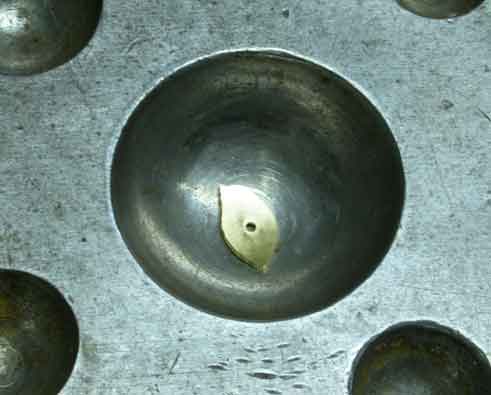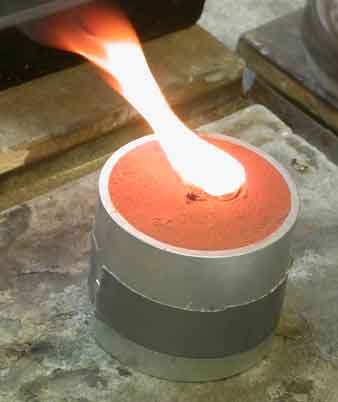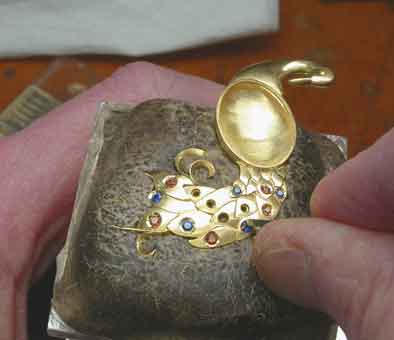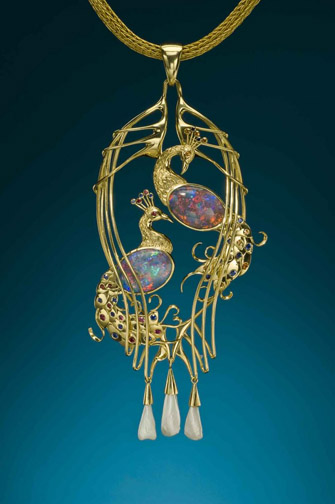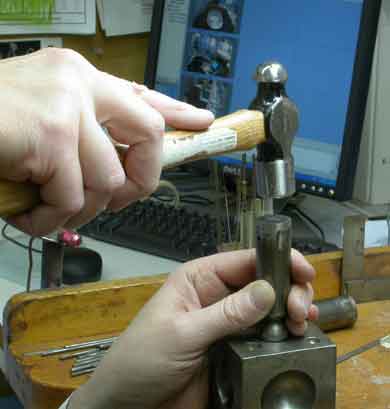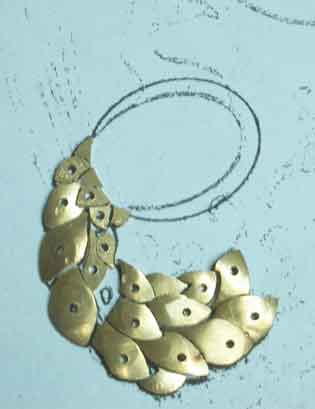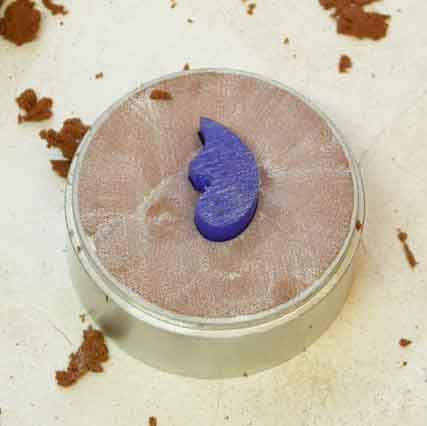Recently I had a spirited discussion with a client about custom design. She was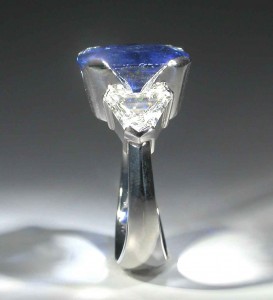 interested in buying a fine stone, but really could not see any value in a handmade setting.
interested in buying a fine stone, but really could not see any value in a handmade setting.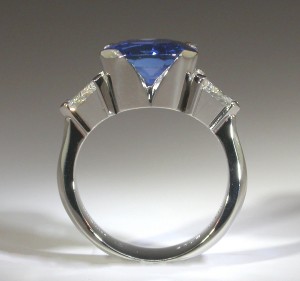 I grew up in a generation that valued the work of the hand. When we first opened our business in 1978, we basically worked as custom goldsmiths. We made an awful lot of wedding rings for clients interested in having a unique symbol of their unique relationship.
I grew up in a generation that valued the work of the hand. When we first opened our business in 1978, we basically worked as custom goldsmiths. We made an awful lot of wedding rings for clients interested in having a unique symbol of their unique relationship.
Today, use the words “handmade original” and the client’s eyes glaze over. Nobody cares, its really all about name brands and low prices. “If it isn’t Cartier how can I get it cheaper?” There is also some confusion about the words, custom design, some people think that it is synonymous with handmade, which it is not.
Why Is Handmade Better Made?
Good question. Why would I rather have a badly handmade ring in preference to a well made production piece? The answer is, I wouldn’t. However, assuming a fine craftsman and a well crafted mass-produced piece, whats the diff?
The art is in the process. You buy a fine sapphire and you want a three stone ring. When a craftsman makes a piece of jewelry the process itself is part of the creative effort. As any craftsperson will tell you, during the making process the piece begins to speak to you in many subtle ways.
Consider the center stone. Enhancement is part of the jeweler’s art and the crafting of the actual setting is very important. I have seen gems made more brilliant or deadened by the setting. A goldsmith can build a setting that will make the color deeper or lighter or increase or decrease its brilliance and scintillation. If you have a $10,000 stone, spending an extra $500 to make it look like a $15,000 stone makes a certain amount of sense. Recently we reset a 7 3/4 carat Burma sapphire. The stone was valued in the six figures. The setting actually made the already rich blue hue, even richer.
Computer Aided Custom Design:
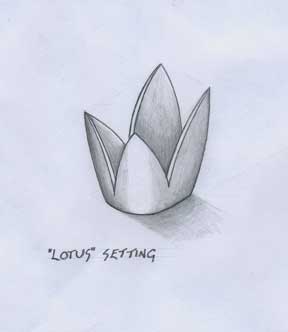
The Lotus. One of our signature settings. Much more graceful than the standard four prong head, the Lotus can be shaped to correct any light leakage from the pavilion of the gemstone and improve the hue/saturation and tone and actually increase the brilliance and scintillation of some gems.
Can a computer do custom design? Certainly, but it rarely does. A Computer Aided Design CAD program is only as good as the person manipulating it and that person is rarely a designer or master craftsman. Just as an image drawn with a pencil and one painted with a brush looks different, a CAD design even when created by a talented designer, always bears the signature of the machine
Most “custom design” offered by commercial jewelers differs little from the process of selecting parts from a catalog, a center setting from column A, a shank from column B. The difference is the parts are stored in a CAD library—a few mouse clicks and you have it—out pops a wax. Commercial jewelers have embraced this technology, it saves having it in inventory.
Enhancement is part of the jeweler’s art. The Lotus Setting pictured above is a good case in point. This is one of our signature settings. It can be shaped and proportioned to correct light leakage from the pavilion (bottom) of the gemstone. Properly engineered (shaped and angled) the lotus can enhance the color (hue, saturation and tone) of a gem and/or pump up the brillance and scintillation of the gem. In the sapphire ring at the top of this post you can see a square lotus that looks quite different from the drawing. Can a lotus be made by machine? Yes, but without the subtle engineering that requires the hand and eye of a master, it’s just another pretty face.
Custom handmade pieces are the creme de la creme of fine jewelry. Art is a process that speaks to the maker. Computer Aided Design (CAD) may technically fit the definition of custom but it rarely more than construction by catalog and it will never replace the eye and the hand of a fine artist/craftsman.
